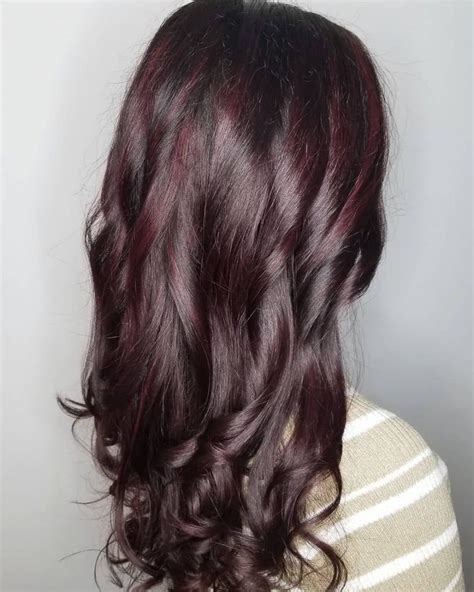Natural Hair Color: A Gift of Genetics
Red hair is a captivating trait that affects approximately 1-2% of the global population. With an estimated 3 million redheads residing in the United States alone, this unique hair color is often associated with Irish and Scottish heritage. The genetics behind red hair are relatively straightforward, with a single gene called MC1R playing a dominant role. Mutations in this gene result in the production of the pigment pheomelanin, which gives hair its distinctive reddish hue.

Redheads: Beyond Hair Color
Beyond their striking hair color, redheads possess certain physiological differences that set them apart from the general population. They are known to have fairer skin, with increased sensitivity to UV radiation. This increased vulnerability to sunburn emphasizes the importance of sun protection for redheads.
Furthermore, redheads often experience decreased pain tolerance, heightened sensitivity to heat, and an increased risk of developing certain medical conditions, including Parkinson’s disease. These unique physiological traits underscore the need for tailored medical care, considering the specific needs of redheads.
Red Hair: A Cultural Phenom
Throughout history, red hair has been associated with both positive and negative stereotypes. From the legendary image of the “fiery redhead” to the portrayal of redheads as witches, these depictions have shaped cultural perceptions. In recent years, efforts have been made to challenge these stereotypes and celebrate the beauty and diversity of red hair.
Embracing Redness: A Movement of Pride
In response to historical prejudices, the red hair community has rallied together to form a movement of pride and empowerment. Organizations such as the Redhead Revolution and Red Hot Hair Society promote positive representation and foster a sense of belonging among redheads. These groups champion the unique attributes of red hair, challenging societal norms and promoting self-acceptance.
Caring for Red Hair: Tips and Tricks
Nurturing red hair requires specific care practices to maintain its vibrancy and health. Here are some tips to keep in mind:
-
Color Protection: Red hair is prone to fading, so using color-protecting shampoos and conditioners is essential. Limit heat styling and avoid excessive sun exposure to preserve the color’s intensity.
-
Moisturizing: Red hair tends to be drier than other hair types, necessitating regular moisturizing treatments. Deep conditioning masks and leave-in conditioners can provide deep hydration and prevent breakage.
-
Gentle Handling: Avoid harsh brushing or combing, as red hair is more delicate. Use a wide-tooth comb or paddle brush to detangle knots without damaging the hair.
-
Sun Protection: As mentioned earlier, redheads have increased skin sensitivity to UV radiation. Wearing a hat and applying sunscreen can help protect both hair and skin from sun damage.
Exploring New Applications: The Pigment of Possibility
Pheomelanin, the pigment responsible for red hair, has potential applications beyond hair coloring. Researchers are exploring its use in:
-
Medical Imaging: Pheomelanin’s unique fluorescence properties make it a promising contrast agent for medical imaging techniques, such as magnetic resonance imaging (MRI).
-
Bioelectronics: Pheomelanin has shown promise as a biomaterial for electronic devices, combining electrical conductivity with biocompatibility.
-
Cosmetics: Pheomelanin’s antioxidant and anti-inflammatory properties could lead to novel cosmetic applications, such as skincare products and hair growth treatments.
Tables for Reference:
- Redhead Population Distribution:
| Country | Estimated Redhead Population |
|---|---|
| United States | 3,000,000 |
| Ireland | 64,000 |
| Scotland | 58,000 |
| Netherlands | 40,000 |
| Canada | 37,000 |
- MC1R Mutations and Red Hair Phenotype:
| Mutation | Phenotype |
|---|---|
| R151C | Red hair, fair skin |
| R160W | Red hair, darker skin |
| V60L | Light red hair, fair skin |
- Pain Sensitivity in Redheads:
| Pain Type | Redhead Sensitivity |
|---|---|
| Thermal Pain | 25% lower pain threshold |
| Electrical Pain | 15% lower pain threshold |
| Mechanical Pain | No significant difference |
- Medical Conditions Associated with Red Hair:
| Condition | Risk in Redheads |
|---|---|
| Parkinson’s Disease | 50% higher risk |
| Melanoma | 2-fold increased risk |
| Prostate Cancer | 25% lower risk |
Conclusion: Red Hair Humans – A Unique and Intriguing Group
Red hair humans are a fascinating and distinctive group, their unique hair color and physiological traits setting them apart from the general population. While historical stereotypes have often shadowed their image, contemporary efforts have helped foster a movement of pride and acceptance among redheads. Embracing their unique attributes and caring for their hair with specific practices can help redheads maintain their vibrant and healthy locks. Furthermore, ongoing research into pheomelanin presents exciting possibilities for new applications in various fields, demonstrating the versatility and potential of this captivating pigment.
